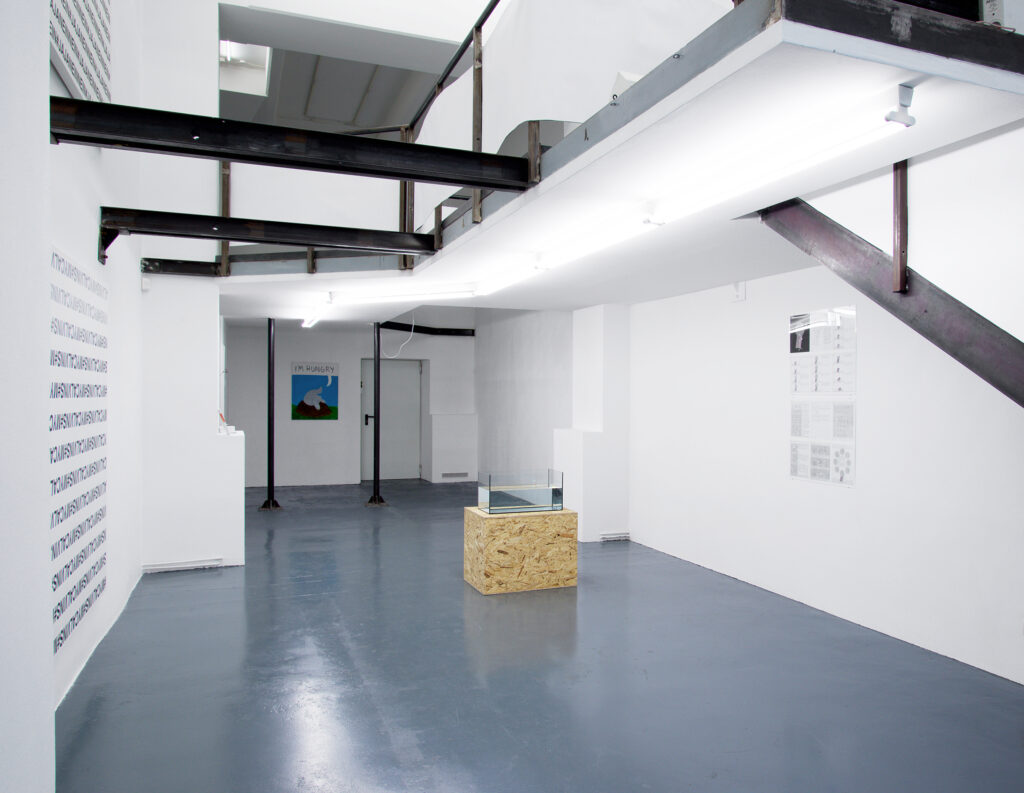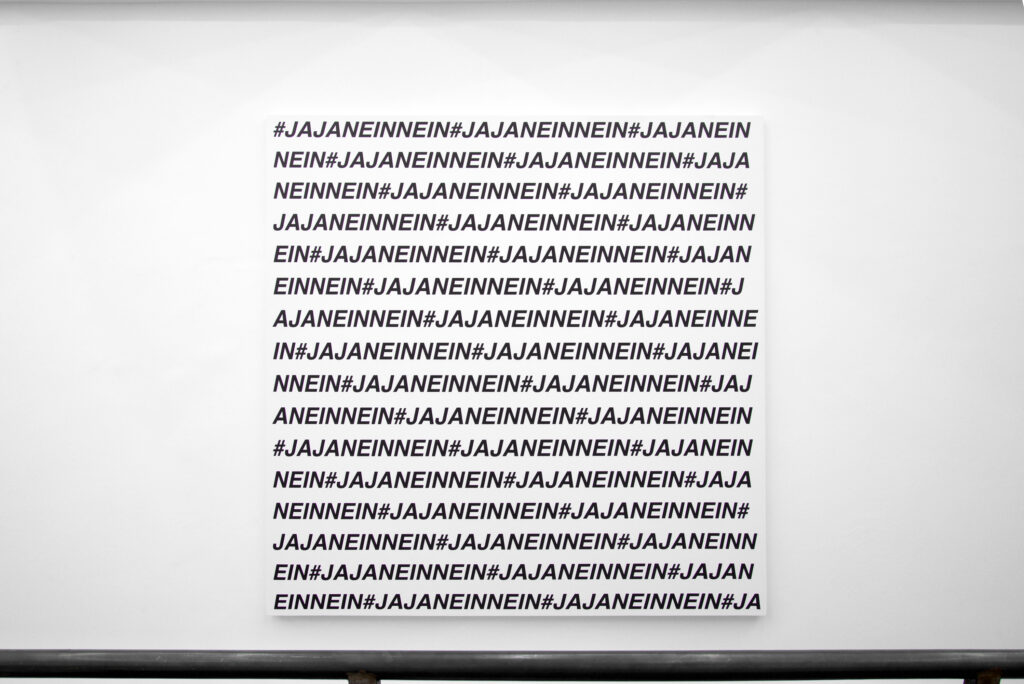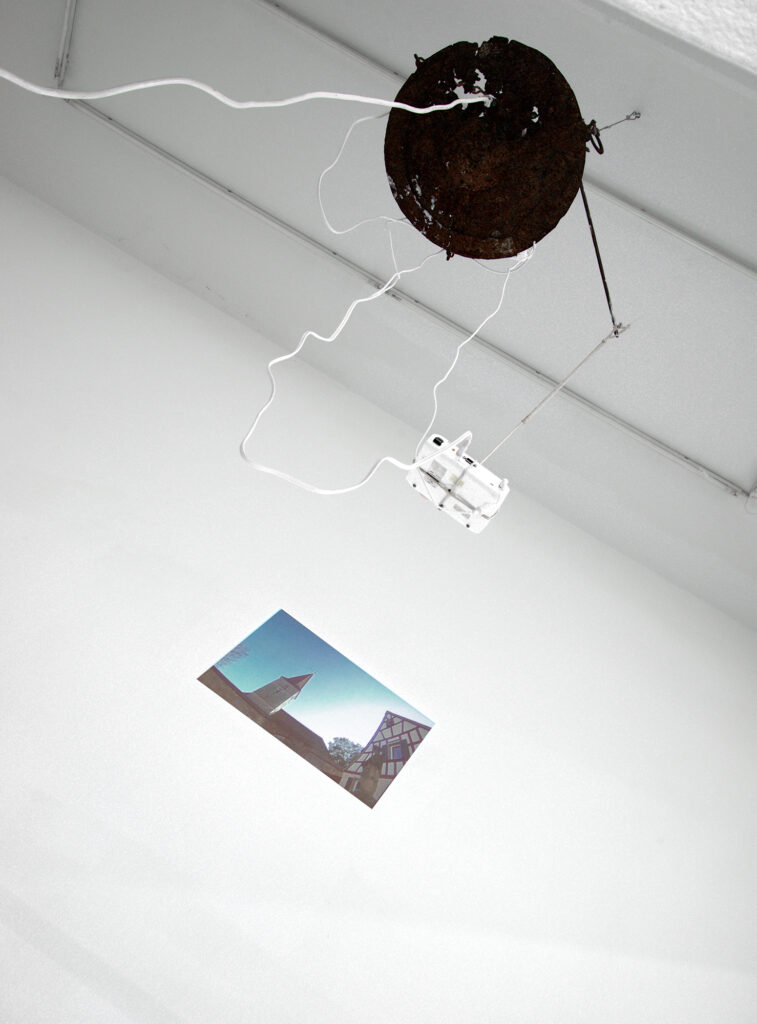“The relation between now and tomorrow, between the present state of the world and the future state of the world is not necessary (that is, necessitated). The present does not contain the future as a linear development. The emergence of a form among many possible forms is the – provisional and unstable – effect of a polarization, the fixation of a pattern.”
– Franco Bifo Berardi
What connects language and art is the assertion of a time-bound utterance that is attributed a truth content. Just as Bifo contrasts the possibility and linking of the present with a form of “future”, and so confronts the human body with the choice of having to make a conscious decision, precisely these unconscious processes are to be found again in language and art. Every single conscious decision-making process can lead to a variation of future and, in this way, every work of art can mutate into an uttered statement on our time. This mutation in the form of a statement is not necessarily easy to apprehend; even more difficult is its adequate description. The authenticity inhering to this asserted statement needs to be scrutinised, every time, at all times.
Our language is an extendable yet seemingly unyielding mixed mass. It is everything and nothing. Language happens without thinking, it has formed on its own in human evolution simply by being used. And it forms itself in such a way that, right down to the present day, it remains unclear how human language could develop in the first place. The result of a leading global study from 2014 came to the sober conclusion that “the origins and evolution of our linguistic capacity remain as mysterious as ever.”
Despite this mysteriousness, language sets the horizon of thought content – it resides prior to thinking. The limits of one’s own world, what one is, are set by the boundaries of one’s language. The realm of the possible/viable and thus the facets of “reality/future/past” reside in a capacity to use language to visualise them. What can be said is transferred into the realm of probability, becomes an eventuality. True or false. Fake or fact. The world is a totality of facts. But how are they to be verified or falsified? How meaningful is it to still rely on the imputative distinction true/false = meaning/meaningless?
Today, the false attracts more attention and is more popular than the good old truth (alt-right, post-truth, fake news, alternative facts, Trump Trump Trump, etc.). What importance can still be attached to asserting truth claims? Which realities/possibilities are being created here?
One beneficial use of language is (successful) communication. The logic inherent to language thus precedes the idea of efficiency. Language is geared to functioning and mediating. It strives to take a form and influence our perception. Creative thinking opposes efficiency, the interpretable, the abandoning of representation and the representative. Narrativity and fictionality complement each other.
One wants to veer out. Not deliver a linear vision, but show the diversity in variance. Find possibilities for a future language. Disconnect the necessary from the compelled and examine it. The not-understanding of a language does not inevitably mean remaining stuck without any insight. What would it be like to read art as a possible statement that, quite deliberately, cannot be understood epistemologically, or that circumvents the explicit logics of language? Perhaps it is precisely in playing with language that the possibility opens up of leaving behind meaning, sense and purposefulness. But so often we fall into the trap of an inherent logic immanent to a language utterance. Then recognising patterns, decoding is an unavoidable action of linguistic communication, as it is of art.
To understand works of art as the instruments of language used by artists means to interpret them as means for communicating with the world and self. Every artist develops his/her own reference system of language and thus his/her own degree of logic/non-logic, of utterance/assertion. The code of this language has to be found. The material encountered, the sentences or the abstract gestures to be read, are the starting point but not the endpoint of this search. Acquiring and appropriating an individual pictorial language to uncap one’s own thinking. Starting from our own language, we enter the world of possibilities of other people. Always based on a mélange of linguistic analysis and Freudian curiosity.
unttld contemporary, 4., Schleifmühlgasse 5: cur. by_ Mélange (Patrick C. Haas & Jonas Schenk)
Excerpts from Lina Hermsdorf: A Biologically Immortal Living Being Can Still Die at Unttld Contemporary, Vienna, 14.9.2017.
Performer: Henry Babbage















